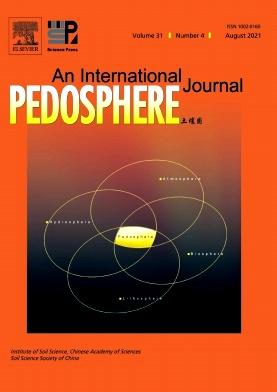稻草管理:可持续生态系统的替代战略和新兴技术
IF 7.3
2区 农林科学
Q1 SOIL SCIENCE
引用次数: 0
摘要
水稻收获后产生的秸秆是世界上主要的农业废弃物。由于稻草的主要成分是纤维素和被木质素包裹的半纤维素,因此具有较高的碳氮比,比其他秸秆更耐微生物降解。秸秆燃烧时,二氧化碳、甲烷、一氧化碳、一氧化氮等有害物质以烟雾的形式释放到空气中(颗粒小于10 μm)。焚烧稻草的增加给居住在印度哈里亚纳邦、旁遮普邦和北方邦的普通民众造成了太多的事故和健康问题。国家绿色法庭正在敦促这些邦创收,而不是焚烧稻草。尽管这些木质纤维素材料可能是有益的,但对它们的研究还不多。本综述涵盖了稻秆和稻壳的特性,用于制造有价值产品的众多程序,以及可能为它们制作的各种应用。这些包括能源、环境吸附剂、建筑用品和专业商品。本文章由计算机程序翻译,如有差异,请以英文原文为准。
Rice residue management: Alternative strategies and emerging technologies for a sustainable ecosystem
Rice straw, which is produced after the harvest of rice, is a major agricultural waste in the world. Rice straw has a high carbon/nitrogen ratio and is more resistant to microbial degradation than other straws because its main constituents are cellulose and hemicelluloses encrusted by lignin. When rice straw is burned, hazardous substances such as carbon dioxide, methane, carbon monoxide, and nitrogen monoxide are released into the air as smoke (less than 10 μm-sized particles). The rise in the burning of rice straw has contributed to too many accidents and health issues in the general population residing in Haryana, Punjab, and Uttar Pradesh of India. These states are being urged by the National Green Tribunal to generate money instead of burning rice straw. Even though these lignocellulosic materials might be beneficial, not much has been carried out with them. This overview covers the properties of rice straw and husks, the numerous procedures used to create valuable products, and various applications that may be made for them. These include energy sources, environmental adsorbents, building supplies, and specialist commodities.
求助全文
通过发布文献求助,成功后即可免费获取论文全文。
去求助
来源期刊

Pedosphere
环境科学-土壤科学
CiteScore
11.70
自引率
1.80%
发文量
147
审稿时长
5.0 months
期刊介绍:
PEDOSPHERE—a peer-reviewed international journal published bimonthly in English—welcomes submissions from scientists around the world under a broad scope of topics relevant to timely, high quality original research findings, especially up-to-date achievements and advances in the entire field of soil science studies dealing with environmental science, ecology, agriculture, bioscience, geoscience, forestry, etc. It publishes mainly original research articles as well as some reviews, mini reviews, short communications and special issues.
 求助内容:
求助内容: 应助结果提醒方式:
应助结果提醒方式:


